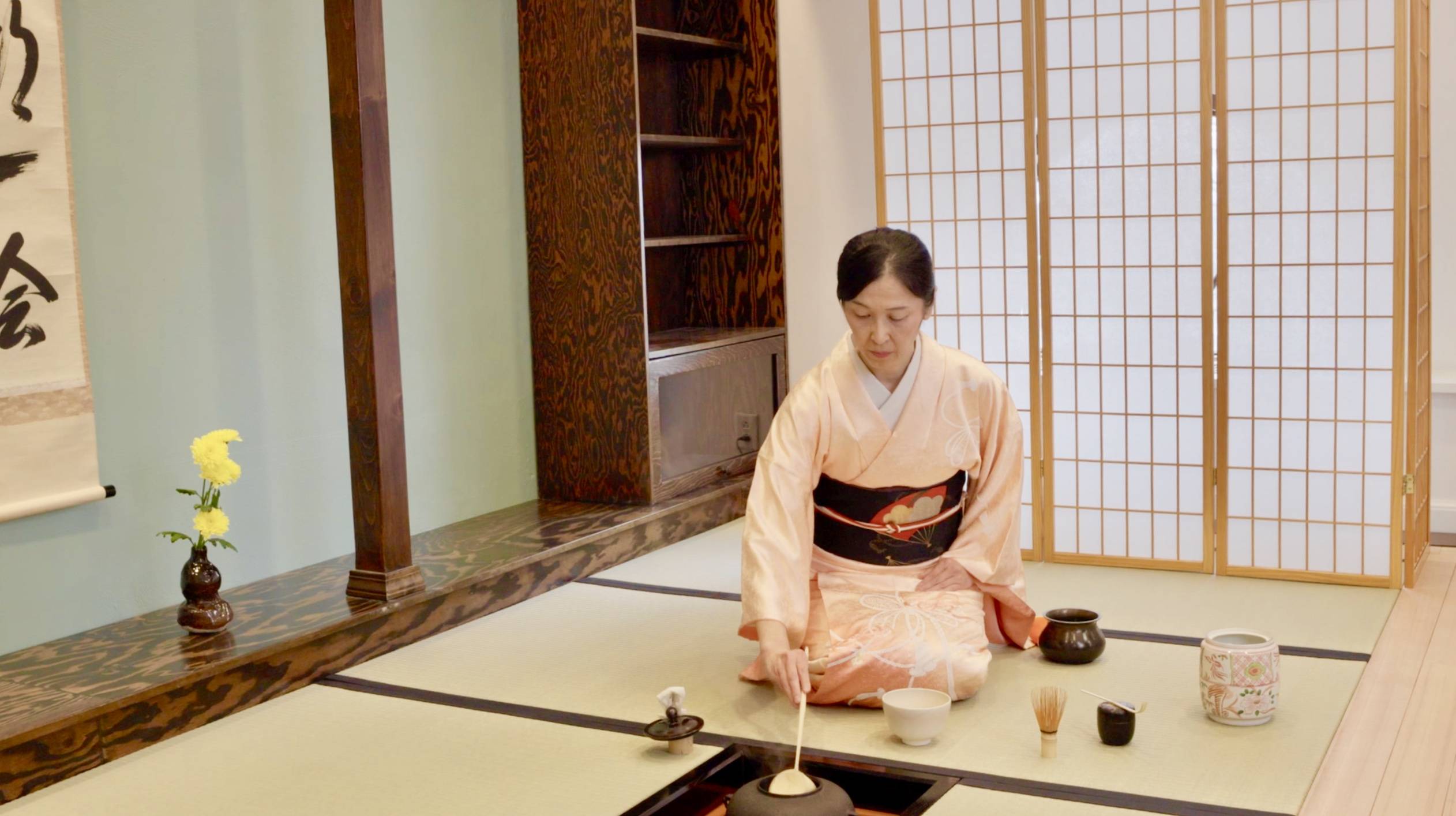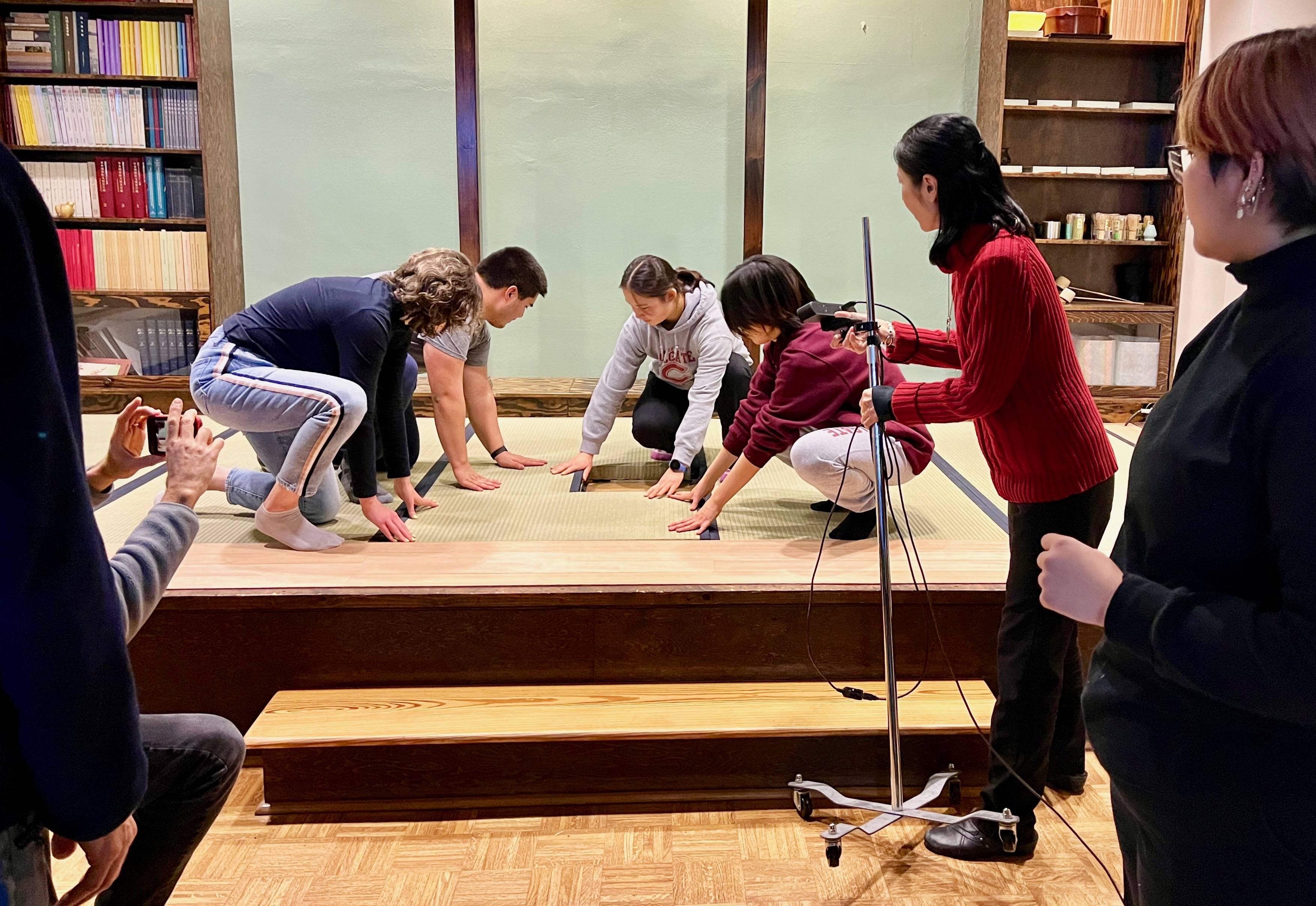On the first floor of Lawrence Hall, a newly renovated space provides a window into Japanese culture.
In early January, the Department of East Asian Languages and Literatures completed the renovation of an authentic Japanese tea room in the Japan Center in Lawrence Hall. Spearheaded by Harrington and Shirley Drake Professor of Japanese and Linguistics Yukari Hirata, the project was funded by Colgate Japanese studies alumni.
The tea room was created to host Japanese tea ceremonies, an important element of Japanese culture since the 16th century, explains Hirata. The ceremony entails the ritualized preparation and presentation of powdered matcha tea, served warm in bowls to guests seated on tatami — the wooden or rice-straw mats that line the floor in traditional Japanese tea rooms.
“The tea room was a peaceful oasis for many who fought in wars and suffered from all kinds of life challenges,” says Hirata, who is also chair of the Department of East Asian Languages and Literatures and director of the linguistics program. “The practice of tea continues today in Japan, and the Way of Tea symbolizes many cultural, historical, and artistic aspects that are visible or invisible in contemporary Japan.”
To ensure the room’s authenticity, two specialists visited Colgate from Japan this fall to work on the space. These experts outfitted the room with traditional tatami mats — which carry a distinct fragrance — as well as the sunken hearth where water is heated. Other elements in the room, including the wall scroll and flower decor, symbolize the changing seasons; each tea ceremony has its own theme.
Hirata spent her recent sabbatical in Kyoto, studying the Way of Tea with a master tea teacher.
“I would wear kimono every weekend, bow to the teacher, and then come back and take notes,” she says. “What I found from that experience is what I want to teach at Colgate; you see the tea ceremony and it looks so choreographed, but it’s much more relaxed and social than people realize. It’s a social gathering.”
Hirata is sharing her knowledge in her Way of Tea course, but she hopes to make the tea room accessible to students, faculty, staff, and community members interested in Japanese culture.
“I want to encourage all people to come, be curious, and ask questions. Don’t be afraid to make mistakes,” she says. “It’s part of the liberal arts education — to be open to learning about another culture and their customs.”
Eleanor Meunier ’26, a history major currently studying abroad in Japan, helped with the tatami installation in December.
“Having an authentic tea room in the Japan Center allows for much more immersive learning, as we are able to engage in hands-on activities as well as normal classroom learning,” she says. “When I came to Japan this semester, I was able to recognize tea spaces similar to the one we have at Colgate. It gave me a sense of familiarity in a largely unfamiliar environment. I am looking forward to returning to Colgate’s tea room and feeling as if I am back in Japan.”

